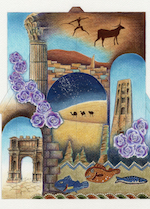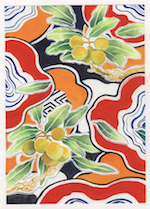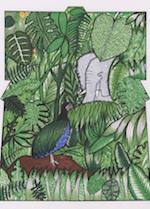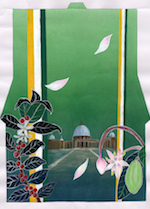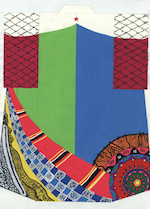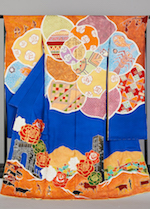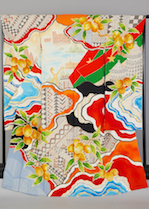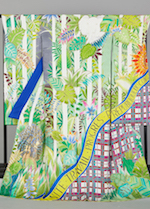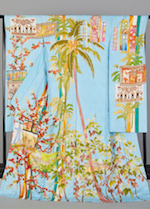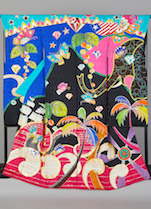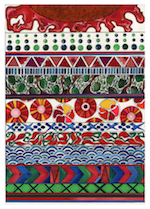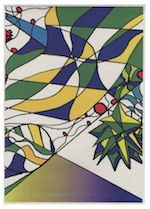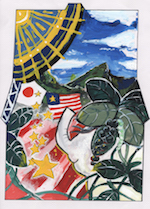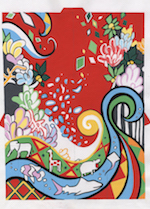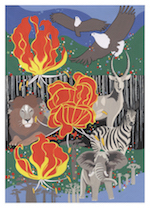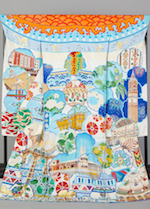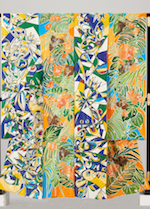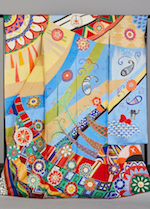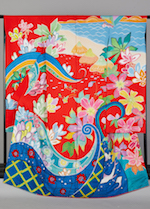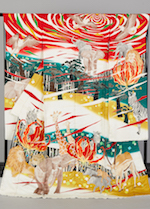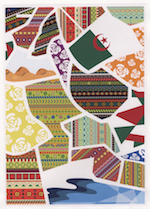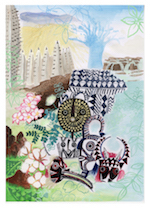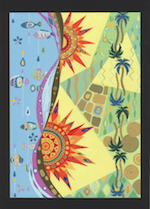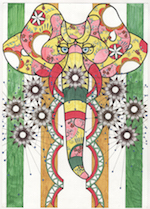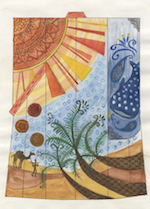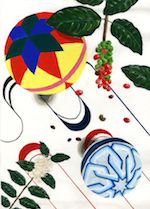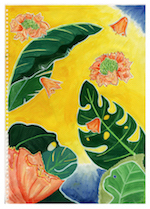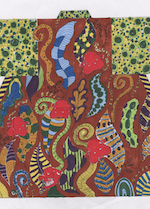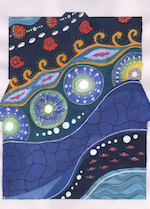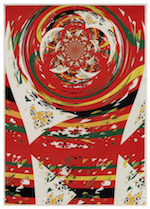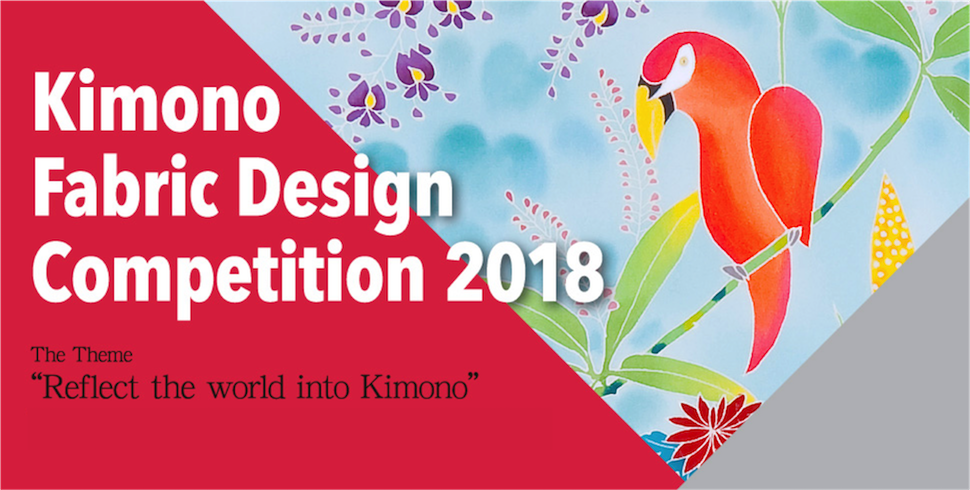

Kimono Fabric Design Competition 2018 >> Japanese Page
Overview of the Competition
The Purpose
The main purpose of this competition is to show the Japanese traditional culture to the world by talking the opportunity of 2020 Olympics. By creating design or pattern that can express the worldwide culture and tradition in kimono, we aim to encourage the interaction between cultures.
The Theme “Reflect the world into Kimono”
As a theme of design, we look for drawings, which express the distinctive culture, scenery, nature and tradition of these intended nations below. Since there will be Tokyo International Conference on African Development Ⅶ at Yokohama, Kanagawa in 2019, African countries are targeted specifically.
(These 9 countries and 1 host town, totally 10 countries)
The movies of the exhibition of this Competition
| Title | Movies (YouTube) |
|---|---|
| [The Exhibition in Kyoto, Japan] |
|
| [The Exhibition in Tokyo, Japan] |
|
| [The Exhibition in Nagahama and Ojiya, Japan] |
|
Announcement of the selection(Gold prize)
This time, in the Kimono Fabric Design Competition 2018, the works below have received Gold prize.
Congratulations to the winners!
| Gold prize | Prizewinners |
|---|---|
| Gold prize of Algeria | Yoko Miyamoto | (general selection) | #1 Design | #1 Kimono |
| Gold prize of Burkina Faso | Suzu Uchino | Shoyo High School| #2 Design | #2 Kimono |
| Gold prize of Congo | Rio Kurogi | Koran college of fashion design| #3 Design | #13Kimono |
| Gold prize of Côte d'Ivoire | Kazuko Yamaguchi | Sasada gakuen| #4 Design | #4 Kimono |
| Gold prize of Djibouti | Kotaro Kano | (general selection)| #5 Design | #5 Kimono |
| Gold prize of Eritrea | Yuu Mitsumata | Hakusan Senior High School| #6 Design | #6 Kimono |
| Gold prize of Gabon | Misora Watanabe | Aizu Yanaizu Gakuen Junior High Schoool| #7 Design | #7 Kimono |
| Gold prize of Liberia | Kimie Emoto | Design technology college| #8 Design | #8 Kimono |
| Gold prize of Mozambique | Riho Masaki | Nagoya University of The Arts| #9 Design | #9 Kimono |
| Gold prize of Zimbabwe | Noriaki Nitta | (general selection)| #10 Design | #10 Kimono |
Announcement of the selection(Silver prize)
The works below have received Silver prize. Congratulations to the winners!
| Silver prize | Prizewinners |
|---|---|
| Silver prize of Algeria | Manami Yoshioka | Tokyo metropolitan kougei high school | #11 |
| Silver prize of Burkina Faso | Nobue Miyake | (general selection) | #12 |
| Silver prize of Congo | Miyu Arai | Ohhara japanese fashion college| #13 |
| Silver prize of Côte d'Ivoire | Nanako Fukai | Aichi bunka fashion college| #14 |
| Silver prize of Djibouti | Yuko Kawashima | (general selection)| #15 |
| Silver prize of Eritrea | Yuuna Suzuki | YAEI Senior High School| #16 |
| Silver prize of Gabon | Koji Iwata | Bunka Gakuen University| #17 |
| Silver prize of Liberia | Hitomi Ando | Chubu fashion college| #18 |
| Silver prize of Mozambique | Yoshie Ishibashi | Nagoya University of Arts and Sciences| #19 |
| Silver prize of Zimbabwe | Reina Meguro | Aizu Yanaizu Gakuen Junior High Schoool| #20 |
For the above-mentioned "Bronze prize" and "Honorable Mention" other than the Gold prize and Silver prize, we will exhibit at the Kyoto exhibition place.
Exhibition Information(ended)
The Exhibition of Award-winning Works is scheduled as follows.
* There's a possibility that schedule may be modified.
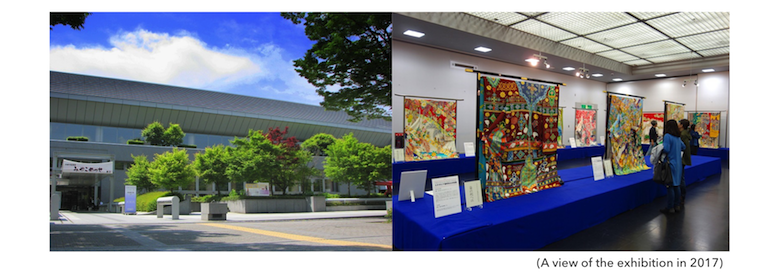
| Location | Exhibition Information |
|---|---|
| in Kyoto, Japan |
Dates: From 23rd October 2018 (tue) until 24th October 2018 (wed) Opening time: 10:00 - 16:00 Venue: Kyoto International Exhibition Hall (Miyako Messe), Hall 2-A Address: 9-1, Okazaki Seisyoji-cho, Sakyo-ku, Kyoto URL: http://www.miyakomesse.jp/english/ Access: [Kyoto city Subway] Higashiyama [Google Maps] |
| in Tokyo, Japan |
Dates: From 5th December 2018 (wed) until 9th December 2018 (sun) Opening time: 11:00 - 20:00 Venue: Shibuya Hikarie, 8F. Address: 2-21-1, Shibuya, Shibuya-ku, Tokyo URL: http://www.hikarie.jp.e.ui.hp.transer.com/access/ Access: Tokyu Toyoko Line, Denentoshi Line, Tokyo Metro Hanzomon Line, Fukutoshin Line "Shibuya Station" Exit 15 and direct connection. / Be connected directly in JR Line, Tokyo Metro Ginza Line, Keio Inokashira Line "Shibuya Station" and 2F connecting walkway. [Google Maps] *On 8th December 2018 at 15:00 - 16:00, We will hold the award ceremony at the same place (Invitation system). |
| in Nagahama, Japan |
Dates: 3rd Nobember 2018 (sat) Opening time: 9:00 - 17:00 Venue: Nagahama Hikiyama Museum Address: 14-8 Motohama-cho, Nagahama-city, Shiga URL: http://www.nagahama-hikiyama.or.jp/ [Google Maps] |
| in Ojiya, Japan |
Dates: From 17th January 2019 (thu) until 22nd January 2019 (tue) Opening time: 10:00 - 17:00 Venue: Ojiya General Industry Hall Sun Plaza, 1F. Address: 1-8-25 jyonai, Ojiya-city, Niigata URL: http://www.ojiya.or.jp/ [Google Maps] |
Have you ever heard of ‘Kimono’ ?
This elegant and beautiful Japanese traditional costume, was first worn by people 1300 years ago, has deeply rooted among the people’s heart. Yuzen is one of the most original kimono dyeing methods.
Presently, there are only few top craftsmen left with the skills to make Yuzen-style kimono.
The fabric used in Yuzen is the finest quality of silk made in Japan. There, top craftsmen who has long experience draw pattern on it, thus enabling them to make colorful and elegant kimono with fine patterns. Thanks for their patience and careful dyeing; we can enjoy many wonderful kimono masterpieces.
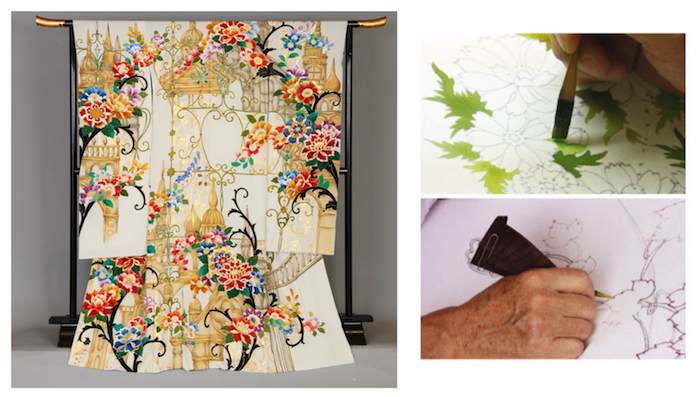
Four seasons of Japan
The hand drawn Yuzen reflects the seasonal natural beauty into silk, it is not simply succeeding the traditional technique but also adding the polished sensibility of expert who lived at the time. It is an embodiment of beauty in more sophisticated way. The Japanese sense of beauty elegantly exist there may be telling our generation today the genuine beauty and mind of Japan.
Yuzen, structured by patterns based on the rich seasonal taste, scenery and grass and flowers of Japan is a combined artwork developed by the graceful nature in Japan.

The future of Yuzen
By combining the various high techniques, one piece of kimono is created in hand drawn Yuzen. How these technique and design are transferred to each step is essential role of “Sensho”, a producer of kimono making. Sensho supervises overall steps and at the same time invents each kimono design and color with his honed sense.
Hand drawn Yuzen representing a beautiful tradition of Japan and the culture of kimono, is passed down through generations as evolving in its long history. It is still making a leap forward in various aspects as a representative of decoration culture and an opinion leader in the design world.
Works using the kimono fabric:
In Japan, we produce new goods using kimono fabric and dyeing techniques.

